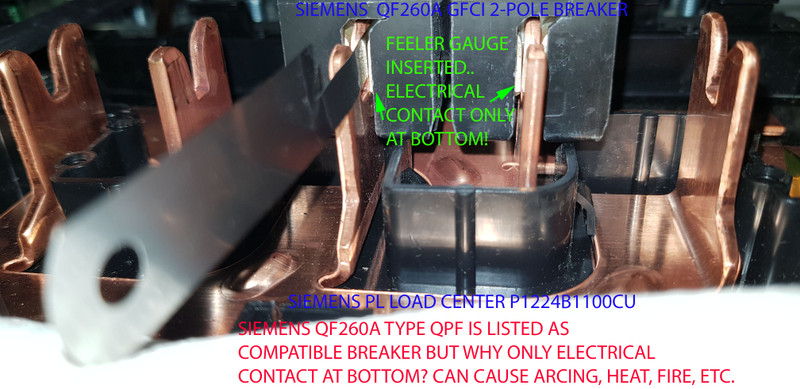Does anyone own any Siemens 2-pole GFCI? When installed on supposedly compatible Siemens panel or load center like the Siemens P1224B1100CU




There is a gap between the bus bar stab and spring clip where you can easily insert feeler gauge (after installation), and only the bottom has electrical contacts. Someone told me there should be no gap in compatible breaker and panel so there is no arcing, melting, heating and burning.
Kindly look at your 2-pole Siemens GFCI and panel to see if such gaps are normal. Note when I tried the Siemens regular QP breaker, there is no gap. Thanks.
Kindly look at your 2-pole Siemens GFCI and panel to see if such gaps are normal. Note when I tried the Siemens regular QP breaker, there is no gap. Thanks.






